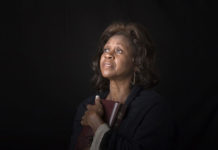So many churches are trying to get larger. They put a lot of time, energy and money into their pursuit of getting bigger. The church needs to make getting small a priority. Church-health proponents are reminding pastors that the bigger the church gets, the smaller it has to get. In our research survey, two-thirds of pastors told us they believe discipleship happens most effectively either one-on-one or in a group of fewer than five.
We want people gathered in worship, then in smaller groups. But we also want to push down further and have them in one-on-one discipling relationships. When we write about groups, we are using that term generically. They could be cell groups, home groups, Bible study classes, adult Bible fellowships, Sunday School classes or accountability groups. We’re less concerned about the place than we are about what they’re doing, the purpose and how they are accomplishing that purpose.
When it comes to group development, churches appear to be either prone to strategy or prone to organic experience. With strategy, churches can fall prey to an assembly-line mentality. With organic experience, they may never do anything. There is room for a third category: a strategic culture of community.
Sometimes organic is used to describe anything that happens unintentionally. It is erroneous to believe that anything ever happens just because it happens. Organic experiences are actually birthed out of the culture and the ethos that is developed in the church.
Since most people who come to church are still enmeshed in the individualist mind-set, groups are not on their radar. Most pastors overestimate the willingness or desire of people to jump into small community.
We need to create systems that move people from being passive spectators to becoming active participants in small-group life. Having a system that says, “We track this,” is important. Several computer programs are designed to help churches keep track of where people are in the process. They track first-time guests, second-time guests, whether they’ve been contacted, etc. But the idea is moving them toward a group.
Creating this culture involves more than the pastor saying, “OK, everybody move from rows to circles.” They’re not going to move because the pastor preaches a series about community or hangs a diagram on the wall. Belief followed by strategy and culture moves people to community.












